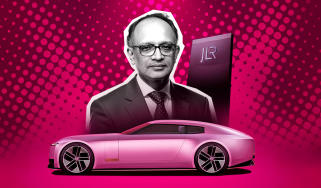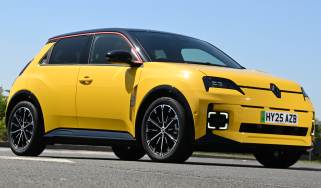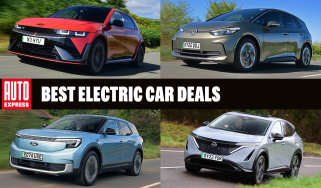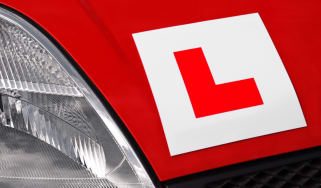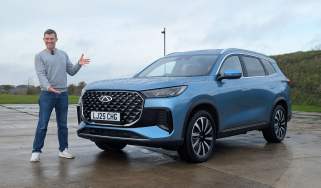Best and worst car brands for depreciation: Which car manufacturer holds value best?
What brands hold onto their value the best, and which are the worst? With data from experts CDL, we reveal all.
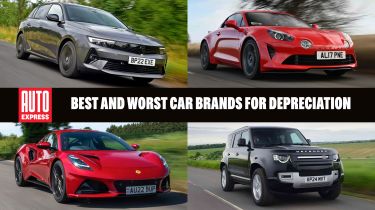
Retained value shouldn’t be your only factor in choosing a new car, but it certainly doesn’t hurt to consider it. If you’re buying the car outright then a car that holds its value will be cheaper to put on your drive. If you’re buying on finance, or leasing, low depreciation tends to result in lower monthly payments. That’s because the finance company which owns the car will also get a bigger chunk of its value back at the end of the deal, and can pass those savings on to you.
There’s a huge gulf between the best and worst performers in terms of car depreciation and our guides to the fastest depreciating and slowest depreciating cars have all the information you need on specific models. If you’re car shopping though, it’s helpful to have the bigger picture of which manufacturers perform best in terms of residual values on their products.
Across the entire range of car brands selling cars in the UK, cars from the marque with the steadiest values hold on to more than 58 per cent of their list price on average. That’s after the industry standard of three years and 36,000 miles of use. Cars from the worst performer, meanwhile, retain only about half of that – 26.72 per cent.
In other words, if you could buy a car of equivalent price from each brand, the one from the worst-performing manufacturer would be worth half what the car from the best-performing brand would be worth after only three years. This is a big financial burden for the original owner to bear (though could mean a bargain for a clever used car buyer).
Below we’ve explained what factors can affect depreciation at a car and brand level. We also look at the top and bottom five performers according to the latest data and provide a full list of all UK car brands ranked by their average depreciation.
Why do some cars depreciate faster than others?
Perhaps the simplest factor in depreciation to understand is demand, based on a car’s desirability a few years down the line. If there’s a queue of buyers waiting to buy a car once the lease ends or when the original buyer comes to sell, they can command a price that’s closer to its original value.
This desirability changes with the whims of the market. Fuel economy, colour, trim level, a car’s perceived reliability, the number of years left on its warranty, and badge appeal all play a part, even within the fixed three-year, 36,000-mile period used for calculating depreciation but certain kinds of cars tend to do fairly well.
Low-volume sports cars tend to shed value fairly slowly, especially special variants – GT3 and GT4 versions of Porsche 911s and Caymans are among the slowest-depreciating cars on the market. Certain particularly fashionable cars will hold their value too, though this is a double-edged sword, as prices can drop like a stone if that same car falls out of fashion after a few years or the market becomes saturated with them.
Another surprisingly resilient category of car is the kind of good value, back-to-basics car sold by the likes of Dacia. These cars don’t cost much to start with, so can’t really fall that far, and since they’re always affordable regardless of how little they depreciate, demand in the used market also stops them falling too fast. Throw in a desirable powertrain (Dacia’s frugal hybrids hold their value particularly well) and you have a recipe for healthy values.
Discounting by manufacturers themselves also plays a key role. If brands start offering their cars with big chunks of cash off the list price, this pushes residual values down. Why would you buy a used car when you can get a brand new one for only slightly more? If that discounting also leads to a spike in sales and lots of cars of a particular type arriving onto the used market, that over-supply can further reduce prices.
Obviously, depreciation calculations are also a kind of catch-all. A particularly well-kept example of a car should see it worth more after three years than the average model of the same type, whereas damage, wear, and high mileage can all see a car’s value drop below that of its peers.
Our Sell My Car Service can get you competitive offers from UK dealers.
The five slowest-depreciating car brands
The five brands below are the slowest-depreciating on the market based on data from market experts at CDL Vehicle Information Services, and it’s no surprise to see premium, sports car, and value brands here, all of which traditionally do well in terms of retained value.
1. Land Rover - 58.2% average retained value
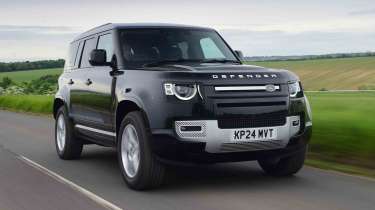
Own a Land Rover, and specifically a diesel Defender? Then you have one of the slowest-depreciating new cars on the roads. A Defender 90 in D250 trim holds on to more than 69 per cent of its value after three years, and most do better than 64% – only the V8s let the side down, with the top-end 500-horse £118k Defender 130 shedding almost half its value over the same period.
Pick a diesel Discovery, Range Rover, or Discovery Sport though, without going overboard with a top-end trim line, and you can be assured of pretty decent used values a few years down the line. Land Rover’s strong image, carefully managed supply and ready queue of willing buyers for the Defender especially put it at the top of this list.
2. Morgan - 58% average retained value
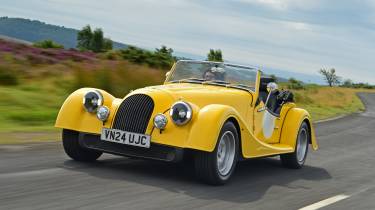
With average retained values of 58%, Morgan shows how well a desirable sports car brand can shrug off depreciation when not dragged down by more common-or-garden models as Porsche and Alpine are below.
In the past, when Morgan had waiting lists years long, its cars barely used to depreciate at all, and while supply is now better, buyers still won’t lose much – the Plus Six is best of the bunch, holding onto around 59.5% after our three-year period. In some ways though, depreciation is almost immaterial – Morgans are the kind of cars that buyers hang onto for much longer than three years.
3. Porsche - 54% average retained value

Stellar performances from some of the brand’s most desirable models, and a generally cast-iron image mean cars wearing the Porsche crest stave off depreciation better than most. Across the entire lineup, a Porsche will hold around 54% of its value after three years, but opt for a 911 GT3 with the manual gearbox and it’ll lose little more than 30 per cent.
Were it not for the electric Porsche Taycan dropping like a stone, the brand as a whole would be even more immune. The barmy Taycan Turbo GT goes from £186k to £65k over three years, so you could nearly buy a brand new Cayman GT4 RS with the £121k difference.
4. Alpine - 53.7% average retained value
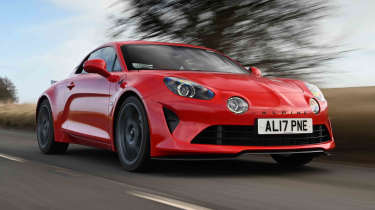
Any worries that buyers might see Alpines as glorified Renaults have been obliterated by the A110, which is among the slowest-depreciating cars on sale – the basic model starts at around £55k and is still more than £33k three years later, for retained value of 61%.
Even the least desirable version on the market, the A110 S, retains nearly 58%. That’d put Alpine right near the top of this list, but for the fact the recently-introduced A290 hot hatch loses around half its value in the same period; not bad in isolation, but not in the same league for residuals as the brand’s bespoke sports car. Not quite as good as the 51% retailed value as the Renault 5 E-Tech the A290 is based on, either. Alpine’s upcoming SUV is unlikely to help its position.
5. Dacia - 53.6% average retained value
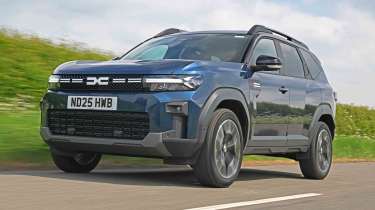
Other than the Dacia Spring, which starts cheap and ends up even cheaper after three years, with retained value of around 40% (how does six grand for a three-year old EV sound?), the Dacia range is pretty slow to shed its value.
Affordable cars tend not to drop too quickly, since their affordability is still a selling point as used cars, and higher demand tends to mean higher values. Since the entire Dacia range already costs thousands less than most things you’d consider rivals, it’s off to a good start. Best of the bunch is the 1.8-litre hybrid Bigster, which holds onto more than 66% three years down the line, and Dacia’s hybrids do pretty well in general.
The five fastest-depreciating brands
If the brands above are the class swots, then the five below are the ones forgetting to do their homework, being a nuisance in class, and staring aimlessly out of the window while the teacher tries to attract their attention.
In fairness, they’re also not the absolute worst depreciators on the new car market, but they’re the lowest among brands that sell proper cars - the likes of Micro (23.9% retained value), DoGood (26%) and Silence (31.4%) all focus on tiny low-speed urban vehicles that depreciate faster than a Cornetto on the Dakar rally.
5. Lotus - 40.9% average retained value
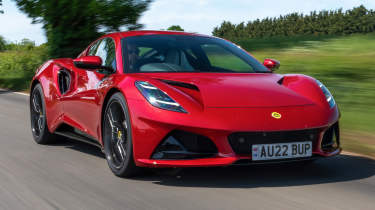
Look around at the prices of old Elises and you might wonder why Lotus is languishing down here. The clue is in what it currently sells: when an Emira sheds around £60k in three years, the fastest-falling Emeya drops from £142k to £55k, and the equivalent Eletra from £142k to about 50 grand, an overall retained value of about 40.9% is the result.
Opt for the cheapest Lotus Emeya at £87k though and you’ll lose the least, with a drop of “only” around £50k in three years, so the message here is obvious: steer well clear of the top-flight models and stick with the least expensive versions if you want to avoid the most precipitous depreciation.
4. Vauxhall - 40.6% average retained value
Vauxhall makes some pretty good cars right now, but it’s not the brand to pick if you want to see a big juicy retained value figure at the end of three years. The range as a whole drops by around 60% in that time, and even the best of them, the Grandland Electric in 73kWh Ultimate spec, hangs onto only 57.57%.
Opt for a plug-in hybrid Astra in the same Ultimate trim though and it’d only be worth 29% of what it cost new. The tumbling values of the Corsa-e don’t help Vauxhall’s figures either, though a three-year old electric supermini for under ten grand is a bit of a bargain for used buyers, so there’s a silver lining at least.
3. DS Automobiles - 39.6% average retained value
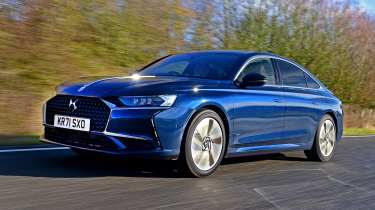
Nothing drops in value quite like a French luxury car, and unfortunately for DS Automobiles – and anyone who buys a new DS – the brand’s raison d'être is to try and sell… French luxury cars.
The biggest offender is the electric DS3 E-Tense, the worst of which tumbles from £39k to just over £11k in three years, and the big DS9 saloon is just behind it, falling from nearly £65k (yikes) to under £19,000 (also yikes) in the same period.
Overall, a DS will retain only 39.5% of its new value after three years, compared to more than 44 per cent for sister brand Citroen or more than 51 per cent for French rival Renault, which burned its fingers with luxury cars decades ago. Want a slower-depreciating DS? The new No8 crossover should hold up to 52.5% of its value after 3yrs/36,000 miles.
2. Jaguar - 30.7% average retained value
Luxury cars are often fast depreciators, with customers usually trading to something newer and even fancier after a few years, and used buyers being left with the uncertainty of long-term running costs, high tax rates and big fuel bills. That said, it can’t help Jaguar’s depreciation rate of only 30.7% retained value that it recently nixed its entire range in preparation for its new electric model arriving in a year or two.
Saab’s values weren’t too hot when that left the market in 2011 either; a brand that appears to the average buyer to be on shaky ground isn’t exactly going to boost interest in its used cars.
1. GWM Ora - 26.7% average retained value
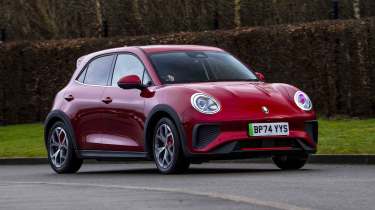
Given the GWM Ora 03 is the fastest-depreciating car in the UK, worth little more than a quarter of its brand-new value after three years, it’s no surprise to find the brand as a whole languishing at the bottom of the retained value list, though at 26.72%, GWM’s other models presumably do a little better than the Ora 03 to minimise depreciation. Funkily-styled though the former Funky Cat is, GWM’s lack of image among UK buyers can’t help things, even if the Poer300 pickup is a competitive effort.
Every UK car brand by average retained value
| Manufacturer |
Average retained value after 3 years and 36,000 miles |
| Land Rover | 58.2% |
| Morgan | 58% |
| Porsche | 54% |
| Alpine | 53.7% |
| Dacia | 53.6% |
| Tesla | 51.8% |
| Maserati | 51.7% |
| MINI | 51.7% |
| Renault | 51.4% |
| Toyota | 51.1% |
| Bentley | 51% |
| Jaecoo | 51% |
| Volkswagen | 50% |
| Hyundai | 49.8% |
| OMODA | 48.6% |
| Kia | 48.6% |
| Smart | 48% |
| CUPRA | 47.9% |
| Lexus | 47.8% |
| Abarth | 47.4% |
| Ford | 47.4% |
| Skoda | 47.4% |
| BMW | 47.4% |
| Honda | 47.3% |
| Audi | 47.2% |
| BYD | 47.2% |
| Mercedes Benz | 47.1% |
| Alfa Romeo | 46.9% |
| MG Motor UK | 46.8% |
| Subaru | 46.7% |
| Volvo | 46.7% |
| INEOS | 46.6% |
| Chery | 45.8% |
| Polestar | 45.6% |
| Nissan | 45.4% |
| Mazda | 45.2% |
| Suzuki | 44.6% |
| Skywell | 44.5% |
| Citroen | 44.4% |
| Genesis | 44.3% |
| KGM Motors UK | 43.9% |
| Leapmotor | 43.9% |
| Peugeot | 43% |
| Fiat | 42.5% |
| XPENG | 42.3% |
| Jeep | 42.3% |
| SEAT | 42.2% |
| Lotus | 40.9% |
| Vauxhall | 40.6% |
| DS Automobiles | 39.6% |
| MEV | 38.9% |
| Silence | 31.5% |
| Jaguar | 30.7% |
| GWM ORA | 26.7% |
| DoGood | 26.1% |
| Micro | 23.9% |
Did you know you can buy a used car with Auto Express? Choose from tens of thousands of cars with trusted dealers around the UK. Click here to buy used with Auto Express now...


